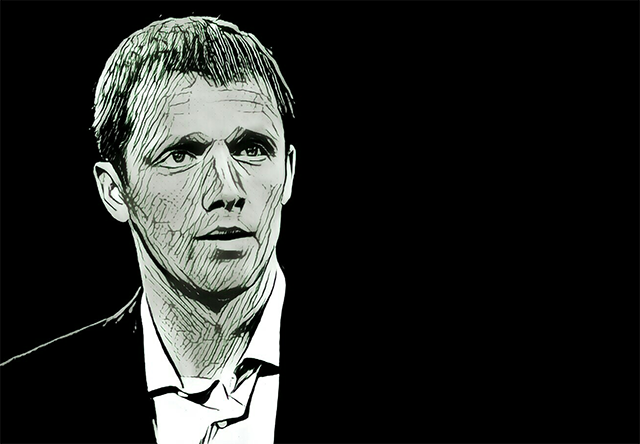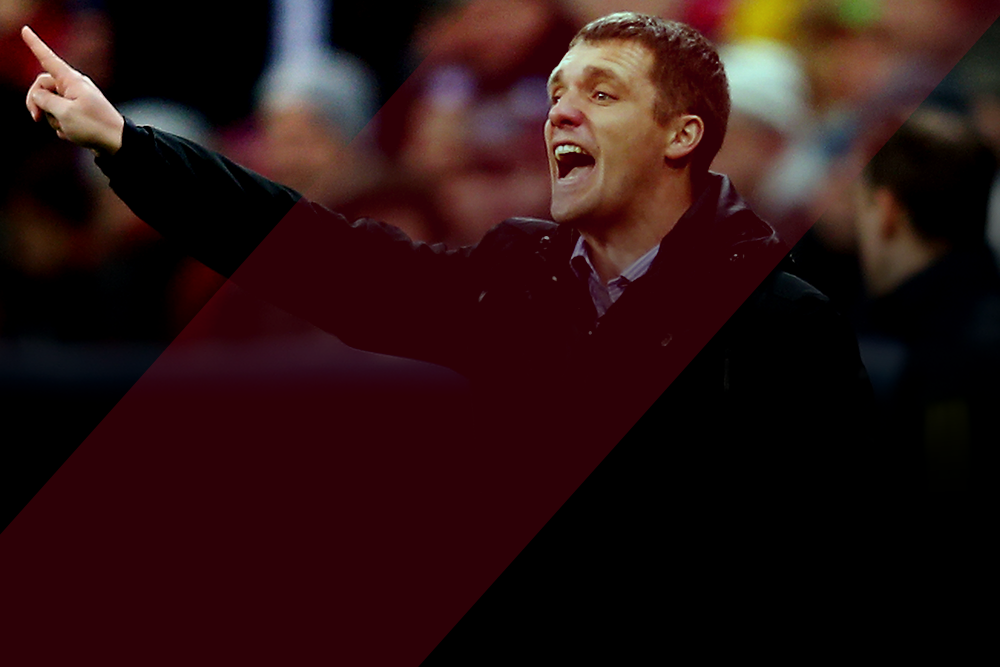The vast continent of Africa has been a regular source of young talents for European clubs. Some of the biggest footballing names have come through from the second-largest continent in the World. While domestic football remains backward, unable to attract the crowds of the 70s & 80s, the national sides have been steadily improving and the influx of players has continued.

Nigeria has been a good hunting ground for European sides, with many getting a move into the promise land in the last decade or so. Ahmed Musa is one such fortunate footballer to come through, with a promising future ahead of him.
Profile
Ahmed Musa grew up in the popular Nigerian city of Jos, which has recently been facing constant riots between Muslim & Christian fraternities. Fellow Nigerian national team-mates, John Obi Mikel and Joseph Akpala are also from the same city.
The youngster started his footballing education at the Aminchi Football Academy. During his time there, he earned a loan move to Nigerian Premier League side, JUTH FC based in his hometown of Jos, to experience football at the top-level. His exploits with the Jos University Teaching Hostipal (JUTH) FC, convinced the 2008 Nigerian Premier League champions, Kano Pillars, to give Musa another loan move. While still only 16-years-old, Ahmed Musa broke a 20 year record in the Nigerian Premier League by scoring 18 goals in one league season, and surpassing the record set by Ishaya Jatau.
Kano Pillars however finished in 2nd spot in the league, 4 points behind champions Enyimba. But his performances were enough to convince Dutch side VVV Venlo to sign the teenager, and the move was completed when Ahmed Musa was on duty with the Nigeria U-20 side at the African U-20 Youth Championship. Although, given his young age, Musa didn’t play a large part in the competition, Nigeria went on to win the tournament with a 3-2 win over Cameroon in Johannesburg.
Ahmed Musa arrived at the Dutch club the same season which saw arguably one of Venlo’s greatest player, Keisuke Honda, leave for Russia, as VVV earned promotion to the Dutch Eredivisie. He made his debut in a 5-3 defeat to FC Gronigen as VVV struggled in the top division of Dutch football. His first goal came in a 6-1 defeat to AZ Alkmaar. He scored a week later in a 3-0 win against NAC Breda, his first win in the Netherlands as he opened the scoring after just 2 minutes at the Seacon stadium. He scored 5 league goals in his first season at Venlo, including a brace in a famous win over Feyernoord. VVV just about survived that season after a Relegation Play-off win. But for Ahmed Musa, it was just the start of his growing reputation.
His talent was being widely recognised in the European media and back home as Musa received a number of accolades. Goal.com named him in a list of best young players, a list which included the likes of Mario Gotze, Thiago Alcantara and Eden Hazard.
Musa went on to represent Nigeria at the U-20 World Cup in Colombia. The Africans topped their group with 3 wins out of 3; Ahmed scored against each group opponent— Guatemala, Croatia & Saudi Arabia. The Nigerians were knocked out by France in the quarter-finals, after beating England in the previous round; Musa however was named in FIFA’s 10-man shortlist for the Golden Ball award.
His fledging career continued, Musa scored a brace as VVV took a 2-0 lead against Ajax at home before conceding 2 in the space of 2 minutes in his first 2011/12 domestic league game of the season. He would score one more goal that season before facing Feyernoord again, a match in which he was sent off before half-time for a second yellow.
Ahmed Musa followed ex-VVV player Keisuke Honda to Russia by signing for CSKA Moscow in the Winter transfer window; his debut came in the Champions League against the mighty Real Madrid. He would go on to score 15 goals in the 2012/13 season for CSKA as he enjoyed his time with the quality of the likes of Honda and Dzagoev around him. He was also an integral part of Nigeria’s African Cup of Nations winning side, scoring a goal in their semi-final win over Mali.
Style, Strengths & Weaknesses
African footballers are often blessed with a commendable physical ability owing to the conditions they grow up in; their technical knowledge is learnt through a proper football education. But the foundations for their playing style is, more often than not, naturally gifted to them.
Ahmed Musa’s most notable resource is his natural pace. The youngster is gifted with a winger’s speed, allowing him to effectively run at defenders and take the opposition on. While it may not be evident off-the-ball, with the possession at his feet, Musa has an incredible burst of energy and pace, which sets him apart from the rest of the players. Questions have been asked often what is the most important asset for a footballer; when it comes to a winger (or any non-target man attacker), it has to be said that speed is pivotal. Even if the winger lacks certain attributes elsewhere, natural pace will always be beneficial.
His quick footwork and dribbling skills complement his ability to be deployed as a winger, and further increase his opportunity to take on defenders. Although he often lacks the delicate touch that prevents him from being a more complete winger, once he does manage to get the ball under control, he showcases awe-inspiring close control and composure. Musa prefers to use his pace to chase the ball even while in possession, rather than it moving in tandem with his speed.
The Nigerian has a reputation of being a more dynamic attacker back in the Russian Premier League with CSKA Moscow, but at this summers’ Confederations Cup in Brazil, he played a more restrained game. The 20-year-old was often seen hugging the touchline and providing width to the side; it was only against the minnows (Tahiti) that he showcased some movement, opting to switch flanks and cutting inside. But in an era where wingers often switch narrower around the box, Musa is a breath of ‘different’ air as he’s rarely seen cutting inside.
Ahmed Musa frequently displays his quickness in a mental sense as well. He’ll chase down opponents in an attacking zone, but would seldom charge from the back to close opponents down. Nevertheless, this mental quickness helps him in reading the game and making interceptions. Against Tahiti he quickly pounced on a weak pass in the defence, taking possession and setting up the 2nd goal. His positioning when his side is in an attacking phase is admirable as well. He offers his team an option going forward, providing width in behind the defence.
Musa is often guilty of venturing on a brilliant run forward, getting past defenders but failing to do anything meaningful inside the box. His end product, unlike his efforts prior to it, is surprisingly poor. It’s the part of his game that needs most attention on the training ground; he could be the complete product if he is able to adequately improve it.
Like most young wingers, Musa too is invisible in a defensive sense. He does track back occasionally and is able to make the opposition player uncomfortable on the ball, but he doesn’t do it regularly enough. Another drawback of Ahmed Musa, possibly owing to his quick pace, is that he gets behind the defence too quickly, too soon. He manages to get caught offside regularly throughout the 90 minutes which can get frustrating for his team, as it’s a cheap way of conceding possession. The youngster is also fairly short, just 5 feet 7 inches, thus aerially he doesn’t offer anything while is redundant for corners as well, opting to position himself outside the box to collect the second ball.
It must be said where his lack of end product and poor first touch is combined, Musa may sometimes be guilty of not getting into the box as often as his coaches would have like. His game thus, is best played between the half-way line and the penalty area against the touchline.
Quotes
“He loves to attack and is capable of helping the team as a winger or an attacking midfielder. Ahmed is very, very fast, light-footed forward and this is his strongest quality. At the same time, Musa is well equipped technically.”
—Leonid Slutsky, CSKA Moscow manager, quoted by bettor.com
“The young player again showed why he was taken to the team – high speed and good technique. He has a serious problem – the supply from the flanks. Although it can be remedied, there are special exercises that are practiced in training”
—Aleksandr Bubnov, ex-Russian footballer and Sports pundit, via allnigeriansoccer.com
“Ahmed has the talent and what is only left for him is to understand the tactical side of the game. He is a player who can cause problems in the defence of any team. The future is very bright for him. He also listens and he is willing to learn. He is not scared and his pace is frightening.”
—Joseph Yobo, Nigerian national team-mate, quoted by MTNFootball.com
Transfer Situation
Ahmed Musa is owned by the same agency that possess the rights to players like Erik Lamela, Benoit Assou-Ekoto & Chu Young Park. Moving to VVV Venlo provided Musa with the chance of playing regular first team football, further enhancing his reputation. It was his performances in Netherlands that attracted the attention of Arsenal, with the London club being linked to a young Musa in the early part of his career. Another smart move to Russia ensured he’d continue to get regular game time. This past season, Chelsea and Spurs have also been linked with Musa, but no concrete reports emerged.
There haven’t been any solid rumours linking the winger with a move away from CSKA. Instead the future of his team-mate, Keisuke Honda, is subject to constant speculation. With the Japanese international likely to move away from the Moscow-based club, Musa’s role in the side could grow further. Remaining at CSKA Moscow is the best option for the Nigerian.
Click here to read our other Scout Reports
View his SoccerWiki profile.























































